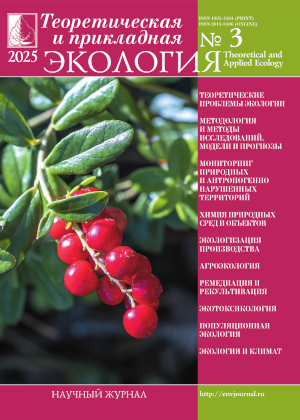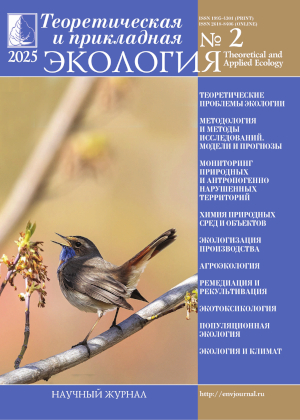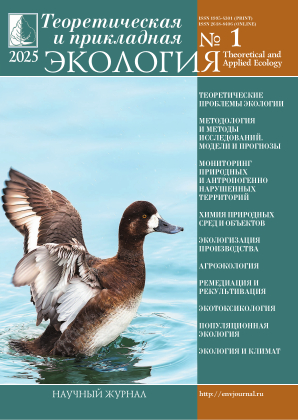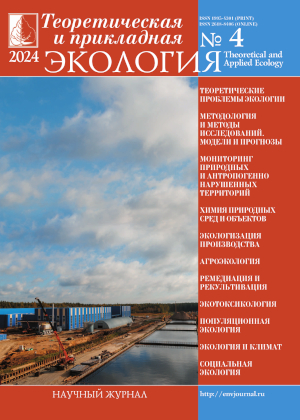The paper investigates the possibility of using agricultural wastes such as hulls of barley, wheat and oat grains to
remove copper ions (Cu2+) from wastewater. The effect of sorption material modification with 1% sulfuric acid solution (H2SO4) on water treatment efficiency was studied. Hulls of cereals, which are wastes of grain processing enterprises, were used as sorbents (SM) of copper ions from model waters with Cu2+ concentration from 0.3 to 62.9 mmol/L (20–4000 mg/L).
It is shown that modification with 1% H2SO4 solution allows increasing the sorption capacity of the investigated materials by 2–15% depending on the initial Cu2+ concentration. The maximum sorption capacity of the modified samples is 1.266 mmol/g for barley hulls, 1.186 mmol/g – for wheat hulls, and 1.266 mmol/g – for oats hulls. The calculation of adsorption parameters showed that the process of copper ions sorption for all studied samples corresponds to the Langmuir model in the area of Cu2+ concentrations from 0.3 to 15.7 mmol/L and to the Freundlich model at concentrations from 15.7 to 62.9 mmol/L.
Measurements of the degree of crystallinity revealed an increase in the amorphous nature of the material after modification, which was confirmed by diffractometric analysis. Microscopic studies showed that H2SO4 treatment alters the surface structure of the sorbent, increasing the specific surface area and releasing active sorption centers. These changes provide a more efficient retention of Cu2+ due to intermolecular interactions with the active sorbent centers.
Thus, modified grain hulls of barley, wheat and oat are promising, environmentally friendly and economical sorbent
for the removal of copper ions from wastewater. Modification with 1% H2SO4 solution provides improvement of sorption characteristics of the material, which makes it applicable for additional treatment of industrial and domestic wastewater containing copper ions. |
 ISSN 1995-4301
ISSN 1995-4301



 Select viewing options
Select viewing options


